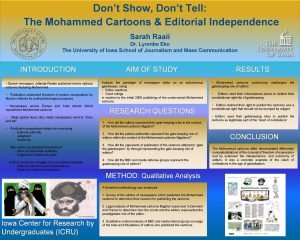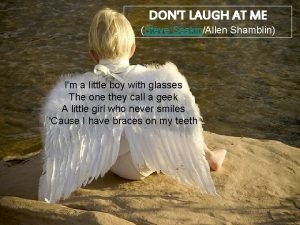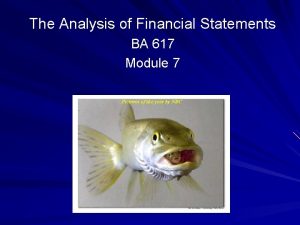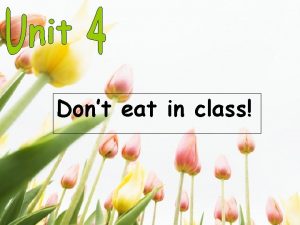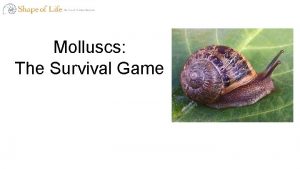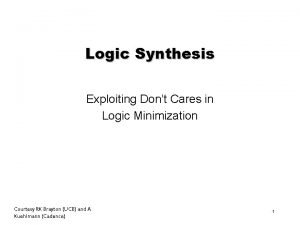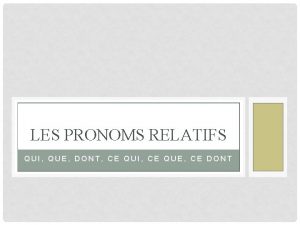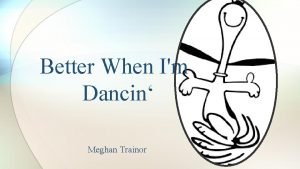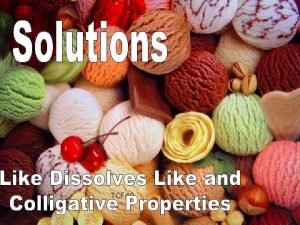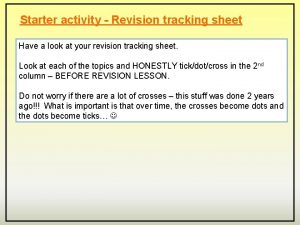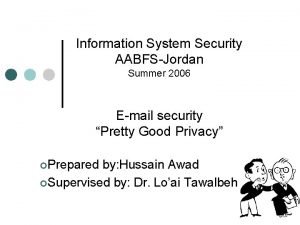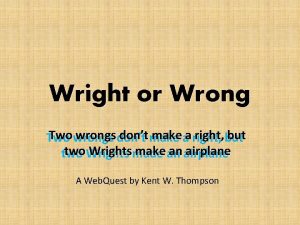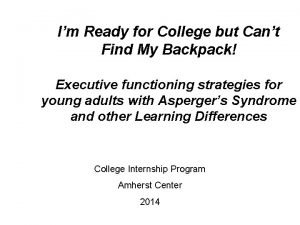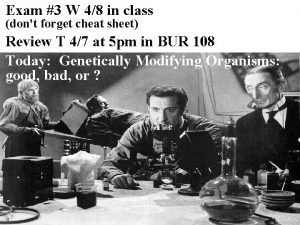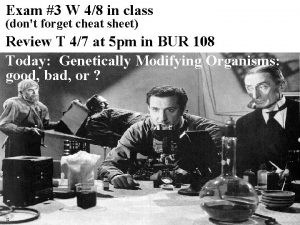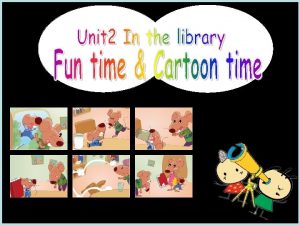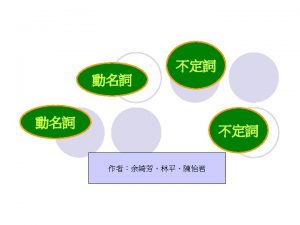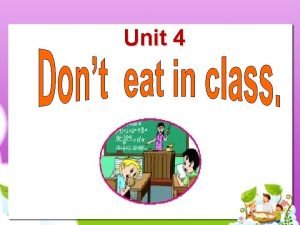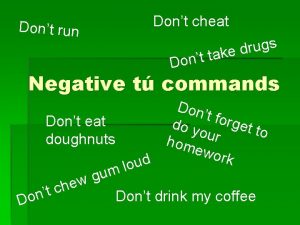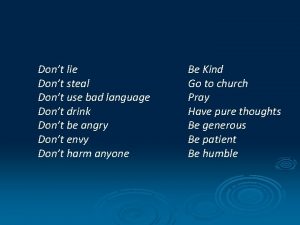Exam 1 T 617 in class dont forget












































- Slides: 44

• Exam #1 T 6/17 in class (don’t forget cheat sheet) • Bonus #1 was due 6/13 • Bonus #2 is due 7/10

Evolution: A species’ genetic component changes as the individuals reproduce

CB 25. 3 Environmental changes drive evolution.

The earth is covered in H. sapiens, but it wasn’t always.

Two hypotheses about the origin of H. sapiens Multiregional hypothesis “Out of Africa” hypothesis

Relationships of different populations using mt. DNA ~150, 000 ya 7 Daughters of Eve, fig. 1

Relationships of different people using mt. DNA. 7 Daughters of Eve, fig. 2

There is no genetic definition of race.

Two hypotheses about the origin of H. sapiens X Multiregional hypothesis “Out of Africa” hypothesis

Proposed model of human evolution/ migration (based on mt and nuclear DNA) Additional migrations Expansion from Asia to Africa Out of Africa of Homo sapiens Out of Africa Fig 9 Out of Africa of Homo erectus

What makes us who we are? Nature and Nurture Based on “Nature via Nurture” by Matt Ridley (2003)

Genes Traits Genes code for proteins. These proteins give rise to traits…

Genes Traits Genes code for proteins. These proteins give rise to traits… It is rarely this simple.

Imprinting: exposure to movement (environment) sets “mother”

X/Y chromosomes in humans: genes = traits

This article, shows how even today people see nature and nurture as opposing each other: The Pathogenesis of the Glaucomas: Nature versus Nurture Mackey, et al. , Clinical & Experimental Opthamology vol 36, pg 297, April 2008

Twin studies have been used to determine the heritability of various traits.

Types of twins: http: //pennhealth. com/health_info/pregnancy/000199. htm

Twin studies have been used to determine the heritability of various traits, but there are some caveats: How many twins have been studied? How different are the environments?

Correlation of weight and relatedness Correlation of weight (BMI) % Identical twins reared together 80 Identical twins reared apart 72 Fraternal twins reared together 43 Biological siblings 34 Parents and children living together 26 Adopted children and parents 4 Unrelated children living together 1 *But food preference shows little genetic correlation The nature of environmental influences on weight and obesity: A behavior genetic analysis. Grilo, Carlos M. ; Pogue-Geile, Michael F. ; Psychological Bulletin, Vol 110(3), Nov 1991. pp. 520 -537. And two books by Matt Ridley: Nature via Nurture (2003) and Genome: the Autobiography of a Species in 23 Chapters (1999)

Intelligence Correlation of IQ Inheritance : The same person tested twice Identical twins reared together Identical twins reared apart Fraternal twins reared together Biological siblings Parents and children living together Parents and children living apart Adopted children living together Unrelated people living apart % 87 86 76 55 47 40 31 0 0 From two books by Matt Ridley: Nature via Nurture (2003) and Genome: the Autobiography of a Species in 23 Chapters (1999)

When the environment is equal (everyone has access to resources), genetic differences are magnified. When environments are different (only a few have access to resources), environmental differences are magnified.

Proof or disproof? Correlation of IQ Inheritance : The same person tested twice Identical twins reared together Identical twins reared apart Fraternal twins reared together Biological siblings Parents and children living together Parents and children living apart Adopted children living together Unrelated people living apart % 87 86 76 55 47 40 31 0 0 From two books by Matt Ridley: Nature via Nurture (2003) and Genome: the Autobiography of a Species in 23 Chapters (1999)

The nervous system allows us to perceive the environment while the brain integrates the incoming signals to determine an appropriate response.

Input to brain is filtered. What are you paying attention to?

Active seeking of info versus Subconscious scanning for threats Are we evolutionarily adapted to detect certain threats?

Emotion Drives Attention: Detecting the Snake in the Grass Journal of Experimental Psychology: General 2001, Vol. 130, No. 3, 466 -478 Arne Ohman, Anders Flykt, and Francisco Esteves

Ability to detect snake or spider versus flower or mushroom by grid position Fig 1. Emotion Drives Attention: Detecting the Snake in the Grass (2001) J. of Ex. Psy. , Vol. 130, No. 3, 466 -478




Ability to detect snake or spider versus flower or mushroom by grid position Fig 1. Emotion Drives Attention: Detecting the Snake in the Grass (2001) J. of Ex. Psy. , Vol. 130, No. 3, 466 -478

Ability to detect snake or spider versus flower or mushroom is relatively quicker in a larger grid Fig 2. Emotion Drives Attention: Detecting the Snake in the Grass (2001) J. of Ex. Psy. , Vol. 130, No. 3, 466 -478

The Role of Social Groups in the Persistence of Learned Fear (2005) SCIENCE 309 pg 785 Andreas Olsson, Jeffrey P. Ebert, Mahzarin R. Banaji, Elizabeth A. Phelps http: //www. sciencemag. org/cgi/content/full/309/5735/785 This perspective accompanies the article and has some useful background and further discussion: http: //www. sciencemag. org/cgi/content/full/309/5 735/711

Conditioned fear: snakes/spiders Fig 1. The Role of Social Groups in the Persistence of Learned Fear (2005) SCIENCE 309 pg 785

Conditioned fear: race Fig 1. The Role of Social Groups in the Persistence of Learned Fear (2005) SCIENCE 309 pg 785

Conditioned fear: snakes/spiders race Fig 1. The Role of Social Groups in the Persistence of Learned Fear (2005) SCIENCE 309 pg 785

Is Race Necessarily a Defining Characteristic? Can race be erased? Coalitional computation and social categorization (December 18, 2001) PNAS vol. 98 no. 26 pg 15387 – 15392 Robert Kurzban, John Tooby, and Leda Cosmides http: //www. pnas. org/cgi/content/full/98/26/15387

Random Statements My birthday is in April. My birthday is in June. is in August. is in January. My birthday is in February. is in July. is in October. is in May. Can race be erased? Coalitional computation and social categorization (December 18, 2001) PNAS vol. 98 no. 26 pg 15387– 15392

Coalition Membership I like orange. Hook em’. Go Aggies. I like to wear chaps. I like to wear overalls. I like Maroon. Gig em’. Go Horns. Can race be erased? Coalitional computation and social categorization (December 18, 2001) PNAS vol. 98 no. 26 pg 15387– 15392

When alternate coalition membership information is introduced, race is ignored. I like orange. Hook em’. Go Aggies. I like to wear chaps. I like to wear overalls. I like Maroon. Gig em’. Go Horns.

Despite a lifetime's experience of race as a predictor of social alliance, less than 4 min of exposure to an alternate social world was enough to deflate the tendency to categorize by race. These results suggest that racism may be a volatile and eradicable construct that persists only so long as it is actively maintained through being linked to parallel systems of social alliance. Can race be erased? Coalitional computation and social categorization (December 18, 2001) PNAS vol. 98 no. 26 pg 15387– 15392

There is no genetic definition of race.

• Exam #1 T 6/17 in class (don’t forget cheat sheet) • Bonus #1 was due 6/13 • Bonus #2 is due 7/10
 Dont ask dont tell political cartoon
Dont ask dont tell political cartoon Dont laugh at me dont call me names
Dont laugh at me dont call me names Dont forget to join
Dont forget to join Round 2 617 to the nearest ten
Round 2 617 to the nearest ten Ba 617
Ba 617 +1 (617) 552-2015
+1 (617) 552-2015 6176503557
6176503557 Dont eat in the class
Dont eat in the class Dont eat in class
Dont eat in class Dont eat in class
Dont eat in class : english class rule -....... don’t forget
: english class rule -....... don’t forget What they don't know wont hurt them
What they don't know wont hurt them Dont remplace quoi
Dont remplace quoi Please dont eat my cookie
Please dont eat my cookie How does the cockle avoid the moon snail?
How does the cockle avoid the moon snail? Verilog dont care
Verilog dont care Qui que dont ou
Qui que dont ou Les pronoms relatifs qui que
Les pronoms relatifs qui que Masayasu wakabayashi meme
Masayasu wakabayashi meme Clip clop dont stop
Clip clop dont stop I bet you
I bet you How do you do a z in sign language
How do you do a z in sign language Show not tell for excited
Show not tell for excited Dont worry be happy notes
Dont worry be happy notes Dont drink the koolaid meaning
Dont drink the koolaid meaning Why dont water and oil mix
Why dont water and oil mix Dont look up tick
Dont look up tick Nouns that don't change
Nouns that don't change How to show not tell
How to show not tell Dont remplace
Dont remplace Que ou dont
Que ou dont I dont care ascii
I dont care ascii Dont count on people
Dont count on people Don't call my bluff
Don't call my bluff I dont care ascii
I dont care ascii Two wrong don't make a right
Two wrong don't make a right Dont believe the world
Dont believe the world Dont eat in the classroom
Dont eat in the classroom Saffron stands for sacrifice
Saffron stands for sacrifice Dont cut the pasta
Dont cut the pasta Pablo neruda i love you
Pablo neruda i love you Hetero dont
Hetero dont People don't plan to fail
People don't plan to fail Dont save lives
Dont save lives Tomorrow i dont know
Tomorrow i dont know
